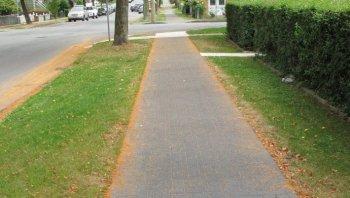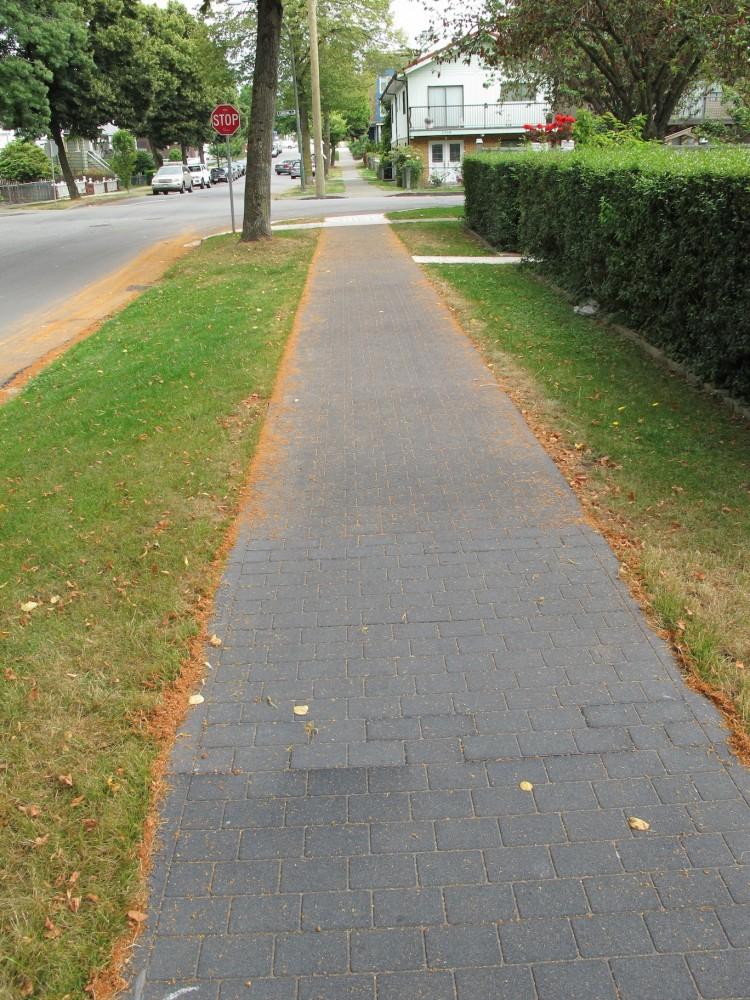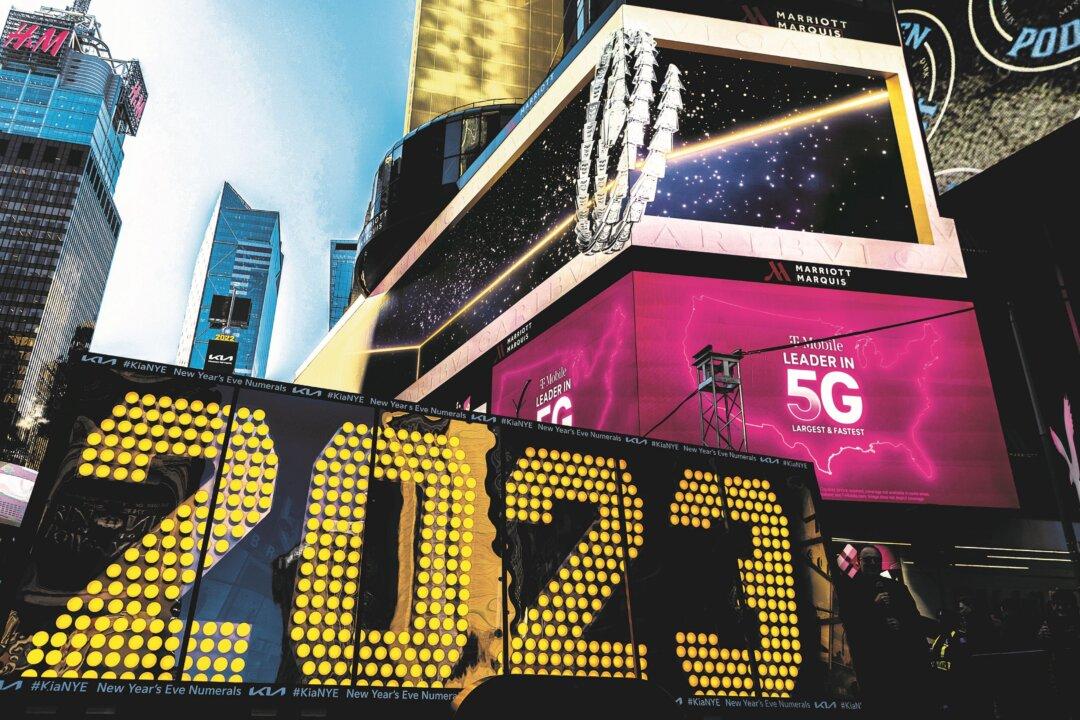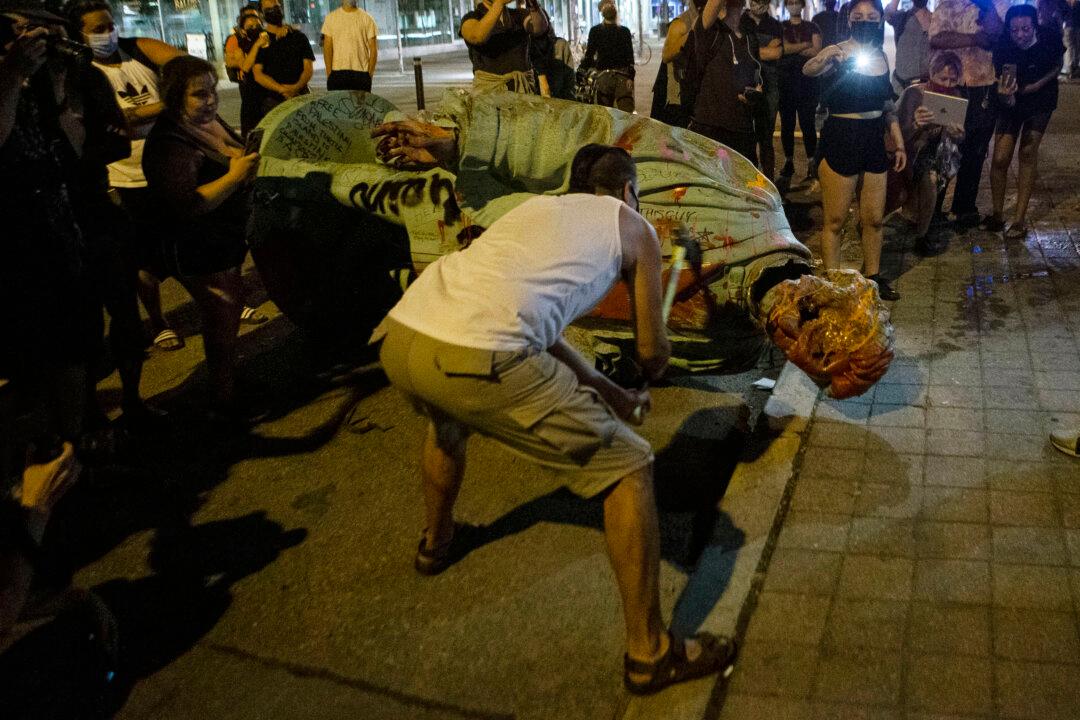If pedestrians walking the 400-block of E 17th Avenue in Vancouver notice the ground a little softer underfoot, it’s because they’re treading on the city’s first rubber sidewalk.
Made of recycled tires, the sidewalk is intended to prevent cracking and reduce maintenance costs. It’s part of a five-year pilot project to test the durability of rubber sidewalks.
Rhys Williams, manager of streets design for the City of Vancouver, said the experiment is also part of the city’s plan to become the world’s greenest city by 2020.
“Rubber sidewalks from a sustainability perspective are lower in greenhouse gases. Obviously they are made from recycled tires so we don’t have to dispose of those tires, and of course we don’t have to create concrete for a concrete sidewalk,” Williams told reporters at the unveiling of the sidewalk.
Since rubber sidewalks provide a softer walking surface, the city is looking at installing them near hospitals and seniors’ centres to accommodate those who use such facilities, he said.
Although the rubber sidewalk, which stretches along the residential block between St. George Street and Carolina Street, cost more to install than concrete, the city expects long-term maintenance costs will be lower.
The flexible material, which comes in sections that interlock, can be easily lifted for periodic tree root trimming at a fraction of the cost of concrete repairs and replacement, making them ideal for areas where tree roots are damaging existing concrete sidewalks.
The block on E 17th Avenue was chosen because the soil there is soft and the concrete had been damaged by tree roots, Williams said.
Alberta-based Eco-Flex manufactured the two-metre rubber sections, which are fire-resistant and fare better than concrete in cold temperatures, according to business development manager Scott Mydan.
“There’s a huge advantage in areas that have freeze-thaw cycles, where you get a lot of concrete cracking just from those cycles. Rubber won’t do that. And another nice thing is you can snowplow on [rubber sidewalks], and ice or salt won’t deteriorate them as it does concrete.”
Mydan estimates rubber sidewalks last 20 to 30 years at least. Calgary and Toronto already have some sidewalks made of rubber, as do cities in the United States, Europe, and Asia.
Williams said residents in the area of Vancouver’s rubber sidewalk are happy with it.
“Overall, the residents love it. It’s a soft walking surface; aesthetically it’s quite pleasing. So, so far it’s been very positive.”
Made of recycled tires, the sidewalk is intended to prevent cracking and reduce maintenance costs. It’s part of a five-year pilot project to test the durability of rubber sidewalks.
Rhys Williams, manager of streets design for the City of Vancouver, said the experiment is also part of the city’s plan to become the world’s greenest city by 2020.
“Rubber sidewalks from a sustainability perspective are lower in greenhouse gases. Obviously they are made from recycled tires so we don’t have to dispose of those tires, and of course we don’t have to create concrete for a concrete sidewalk,” Williams told reporters at the unveiling of the sidewalk.
Since rubber sidewalks provide a softer walking surface, the city is looking at installing them near hospitals and seniors’ centres to accommodate those who use such facilities, he said.
Although the rubber sidewalk, which stretches along the residential block between St. George Street and Carolina Street, cost more to install than concrete, the city expects long-term maintenance costs will be lower.
The flexible material, which comes in sections that interlock, can be easily lifted for periodic tree root trimming at a fraction of the cost of concrete repairs and replacement, making them ideal for areas where tree roots are damaging existing concrete sidewalks.
The block on E 17th Avenue was chosen because the soil there is soft and the concrete had been damaged by tree roots, Williams said.
Alberta-based Eco-Flex manufactured the two-metre rubber sections, which are fire-resistant and fare better than concrete in cold temperatures, according to business development manager Scott Mydan.
“There’s a huge advantage in areas that have freeze-thaw cycles, where you get a lot of concrete cracking just from those cycles. Rubber won’t do that. And another nice thing is you can snowplow on [rubber sidewalks], and ice or salt won’t deteriorate them as it does concrete.”
Mydan estimates rubber sidewalks last 20 to 30 years at least. Calgary and Toronto already have some sidewalks made of rubber, as do cities in the United States, Europe, and Asia.
Williams said residents in the area of Vancouver’s rubber sidewalk are happy with it.
“Overall, the residents love it. It’s a soft walking surface; aesthetically it’s quite pleasing. So, so far it’s been very positive.”







